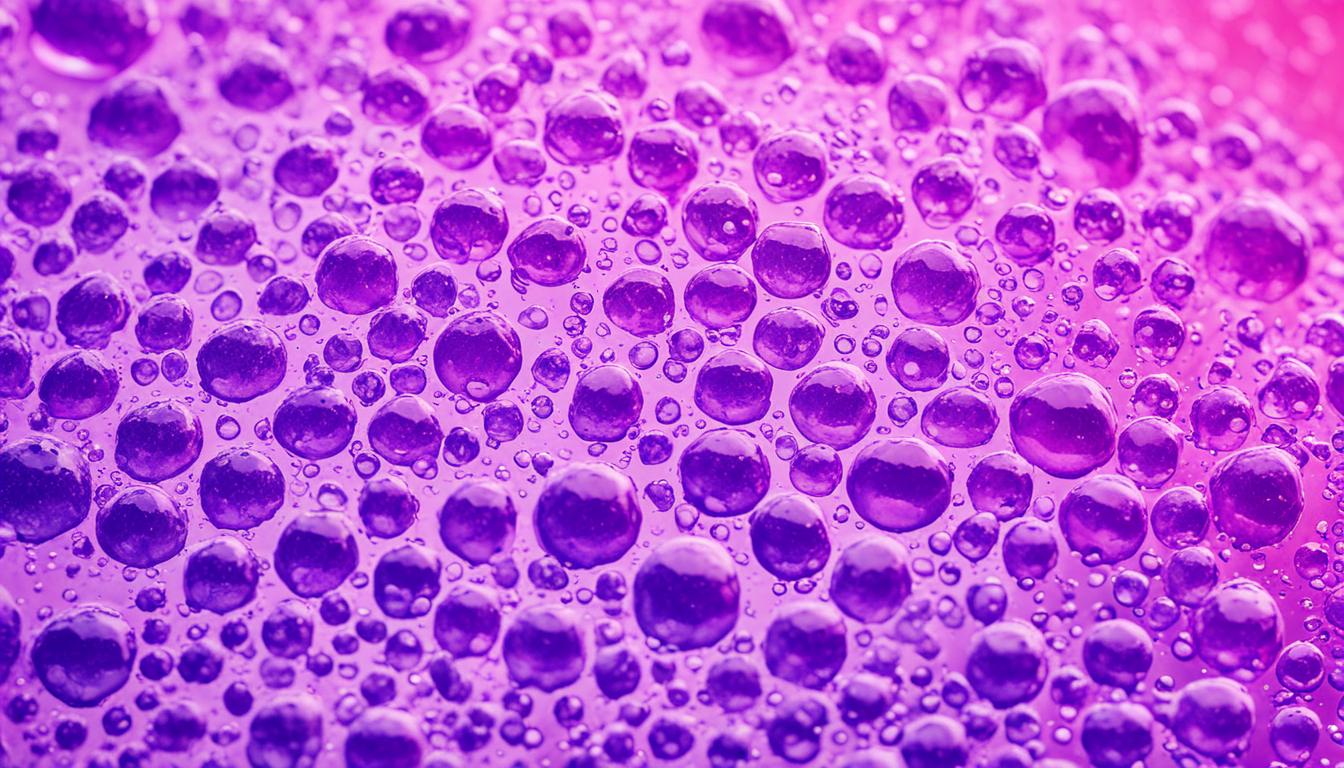Miliaria, also known as sweat rash, heat rash, or prickly heat, is quite common. It blocks sweat glands and ducts, causing sweat to stay in the skin’s outer layers. This happens in hot, moist weather. There are different types of miliaria, like miliaria crystallina, miliaria rubra, and miliaria profunda, each showing specific signs.
You might notice redness, itching, or tiny red bumps on the skin with miliaria. It usually goes away on its own. But, you can prevent it or get treatment, including stem cell therapy, which helps manage the condition.
Key Takeaways:
- Miliaria is a common skin issue caused by blocked sweat glands and ducts.
- Warm, humid weather can lead to miliaria.
- It appears in several forms, including miliaria crystallina, miliaria rubra, and miliaria profunda.
- Symptoms include redness, itching, and small bumps or blisters.
- Although it often goes away without treatment, preventives and therapies like stem cells can be effective.
Understanding Miliaria Crystallina
Miliaria crystallina mostly happens in newborns. It shows up as tiny, clear vesicles on the skin, looking like water drops. These babies’ sweat glands are not fully developed yet, so their skin is extra sensitive.
This sensitivity means little ones can have a hard time with heat and temperature changes. But, the good news is, miliaria crystallina often goes away on its own. It doesn’t even need any special treatment.
Understanding Miliaria Rubra
Miliaria rubra is the most common type of miliaria. It shows up as red bumps when the skin is hot, rubbed, or folded. These bumps form because sweat glands get blocked, keeping sweat in. This leads to redness, inflammation, and irritation. The condition causes itching and discomfort.
To deal with miliaria rubra, creating a cool and dry space for your skin is essential. It’s important to stay away from too much heat and sweating. Choosing loose, airy clothes can help by limiting friction and allowing air to flow. Adding special lotions to your skincare routine can also bring relief.
Calamine lotion is a great option for cooling the skin and stopping itchiness. It brings comfort to those with miliaria rubra. Using antiseptic helps prevent infections and keeps the skin clean.
For severe cases of miliaria rubra, seeing a doctor is important. They can offer a proper diagnosis and recommend the best treatments.
By learning about miliaria rubra and taking steps to prevent it, you can lower your risk. Good hygiene and avoiding too much heat and friction are key. Using the right treatments can also help manage the condition.
Conclusion
Miliaria is a common skin issue caused by blocked sweat glands. This leads to sweat getting trapped under the skin. It mostly happens in hot, humid conditions. But, you can take steps to prevent it.
To avoid miliaria, wear light, breathable clothes in warm weather. Keep your skin cool and dry. This helps stop sweat glands from getting blocked. Don’t use heavy lotions that might clog your pores and trap sweat.
If miliaria symptoms show up, you have treatment options. Calamine lotion can relieve itching and swelling. For some, stem cell therapy might be an effective solution to repair the damaged skin tissue.
For severe or lasting miliaria issues, see a doctor. They can diagnose the problem accurately and suggest the best management options for you.
FAQ
Q: What is miliaria?
A: Miliaria is a skin condition that many know as sweat rash or prickly heat. It happens when sweat glands and ducts are blocked, leading to sweat trapped in the skin.
Q: What causes miliaria?
A: This condition is caused by being in very hot and humid environments.
Q: What are the symptoms of miliaria?
A: You might notice redness, itching, and small red bumps or blisters on your skin.
Q: Does miliaria require treatment?
A: However, miliaria can often clear up by itself. You have options for both preventing and treating it.
Q: What is miliaria crystallina?
A: Miliaria crystallina affects mainly newborns. It shows up as clear fluid-filled vesicles that look like water droplets. This type usually goes away on its own and doesn’t cause redness.
Q: How is miliaria crystallina treated?
A: For miliaria crystallina, specific treatments aren’t usually needed. It tends to disappear without intervention.
Q: What is miliaria rubra?
A: Miliaria rubra, or heat rash, is a common type. It causes red bumps in areas where skin touches and sweat is trapped. This leads to redness, irritation, and blocked sweat glands.
Q: How can miliaria rubra be treated?
A: Treating miliaria rubra involves keeping the skin cool and dry. You should wear loose, breathable clothes and may use calamine lotion as well.
Q: How can miliaria be prevented?
A: To prevent miliaria, dress to stay cool and keep your skin dry. Avoiding heavy moisturizers can also help.
Q: Are there any advanced treatment options for miliaria?
A: Stem cell therapy is a possible advanced treatment for miliaria. It’s important to talk to a doctor for the best advice on managing this condition.

